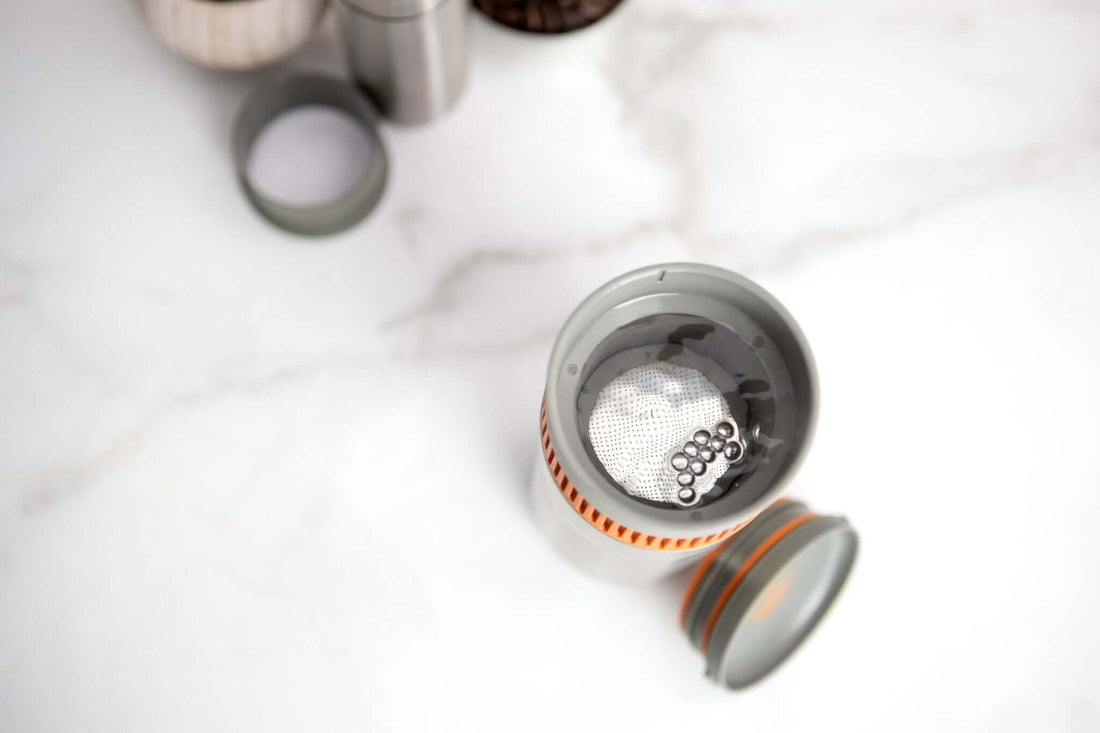Jul 10, 2020Daniel Kennedy
Pipamoka: The Portable Total Immersion Brewer
One of the most exciting aspects of the Pipamoka is that it gives you the ability to use a total immersion vacuum pressure brewing method anywhere; a type of brewing process previously only achieved by using more niche brewers, like the glass Syphon Coffee Maker.

Immersion brewing is a brewing process where the grounds are immersed in water for coffee extraction. Some common examples of this type of brewing are French Press, Aeropress®, Syphon Coffee, and Cold Brew Infusers. The other most common brew method is Drip (also known as Infusion) which is characterized by hot water running through coffee grinds - commonly seen in pour over and traditional coffee makers. Espresso can be classified as its own category, as it is the only method that shoots near boiling water through coffee grinds at high pressure.
Most other brewing methods allow some contact between the wet coffee grinds and oxygen, which can cause oxidation that results in bitter tasting notes. The Pipamoka is relatively unique because brewing starts after the filter basket has been entirely submerged. Because the filter basket is completely surrounded by water when the brewing process starts, an excessively smooth brew is created as no oxidation can take place. While this process does utilize pressure, like traditional espresso making, the pressure created is much lower and gentler. The extraction time is much longer compared to espresso and the resulting brew is more balanced and smooth because of this.
The total immersion vacuum brew aspect can be best compared to some brewing processes, like Syphon Coffee, which has been a niche brewing method since the 1830s. While traditional glass syphon coffee makers create a great brew, they are not the most portable due to their fragility and they are most commonly seen in eclectic cafes. Other immersion methods are similar to French Press, but these methods plunge the loose wet coffee grinds into hot water, and use a manual downwards pressing force to submerge, or push through a filter leaving time for exposure to oxygen as mentioned above. The Pipamoka creates a vacuum underneath the filter basket which then pulls water downwards through the coffee grinds while the filter basket is pulled upwards by twisting the control ring. The Pipamoka process is a unique marriage of the other types of brewing processes that came before, and this merging of processes is what makes a brew from the Pipamoka smoother and more balanced compared to many other methods of coffee making.


Immersion brewing is a brewing process where the grounds are immersed in water for coffee extraction. Some common examples of this type of brewing are French Press, Aeropress®, Syphon Coffee, and Cold Brew Infusers. The other most common brew method is Drip (also known as Infusion) which is characterized by hot water running through coffee grinds - commonly seen in pour over and traditional coffee makers. Espresso can be classified as its own category, as it is the only method that shoots near boiling water through coffee grinds at high pressure.
Most other brewing methods allow some contact between the wet coffee grinds and oxygen, which can cause oxidation that results in bitter tasting notes. The Pipamoka is relatively unique because brewing starts after the filter basket has been entirely submerged. Because the filter basket is completely surrounded by water when the brewing process starts, an excessively smooth brew is created as no oxidation can take place. While this process does utilize pressure, like traditional espresso making, the pressure created is much lower and gentler. The extraction time is much longer compared to espresso and the resulting brew is more balanced and smooth because of this.
The total immersion vacuum brew aspect can be best compared to some brewing processes, like Syphon Coffee, which has been a niche brewing method since the 1830s. While traditional glass syphon coffee makers create a great brew, they are not the most portable due to their fragility and they are most commonly seen in eclectic cafes. Other immersion methods are similar to French Press, but these methods plunge the loose wet coffee grinds into hot water, and use a manual downwards pressing force to submerge, or push through a filter leaving time for exposure to oxygen as mentioned above. The Pipamoka creates a vacuum underneath the filter basket which then pulls water downwards through the coffee grinds while the filter basket is pulled upwards by twisting the control ring. The Pipamoka process is a unique marriage of the other types of brewing processes that came before, and this merging of processes is what makes a brew from the Pipamoka smoother and more balanced compared to many other methods of coffee making.

Jul 10, 2020
Daniel Kennedy


